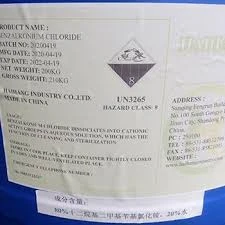Understanding the Processes of Coagulation and Flocculation in Water Treatment
Coagulation and Flocculation Essential Processes in Water Treatment
Coagulation and flocculation are critical processes in water treatment that play a vital role in ensuring safe and clean drinking water. These processes are primarily designed to remove suspended particles and impurities from water by means of chemical and physical reactions. Understanding these processes is essential for the effective management of water quality in both municipal and industrial applications.
The Basics of Coagulation
Coagulation is the first step in the water treatment process and involves the addition of chemical coagulants to water. These coagulants, such as aluminum sulfate or ferric chloride, are used to destabilize the fine particles dispersed in water. Under normal conditions, these particles carry a negative charge, which keeps them suspended. However, when coagulants are introduced, they neutralize the negative charges on the particles, allowing them to come closer together.
The effectiveness of coagulation depends on several factors, including pH, temperature, and the type and dosage of the coagulant used. By adjusting these variables, water treatment facilities can enhance the coagulation process to ensure maximum removal of contaminants.
Flocculation Building Larger Particles
Once coagulation has occurred and particles have been destabilized, the next step is flocculation. In this stage, gentle mixing is employed to promote the aggregation of the destabilized particles into larger clusters known as flocs. This process relies on physical forces to bring the particles together. Flocculation typically occurs in a specially designed tank where slow mixing enhances the collision and bonding of particles without breaking them apart.
The resultant flocs are significantly larger than the individual particles and can be easily removed from the water through sedimentation or filtration. The efficiency of floc formation can be influenced by factors such as mixing speed, time, and temperature. An optimal flocculation process can substantially improve the quality of treated water.
coagulation and flocculation

The Importance of Coagulation and Flocculation in Water Treatment
The combination of coagulation and flocculation is essential for the removal of various impurities from water, including silt, bacteria, viruses, and organic materials
. These processes are particularly crucial in surface water treatment, where natural sources of water can contain high levels of turbidity and contaminants.Moreover, the importance of coagulation and flocculation extends beyond drinking water treatment. They are also widely used in wastewater treatment, industrial processes, and even in the food and beverage industry. In each of these applications, the removal of suspended solids is critical to maintaining operational efficiency and protecting environmental health.
Advancements in Coagulation and Flocculation Technologies
Recent advancements in coagulation and flocculation technologies have greatly improved the efficiency and effectiveness of these processes. The introduction of new coagulants, such as polyamines and synthetic polymers, has enhanced the ability to treat challenging water sources with high levels of contaminants. Additionally, advancements in monitoring and control systems have allowed for real-time adjustments to coagulant dosages and mixing conditions, optimizing treatment outcomes.
Moreover, the application of new materials and technologies, such as membrane filtration and advanced oxidation processes, are being integrated with traditional coagulation and flocculation methods to create more holistic water treatment solutions. These innovations not only improve water quality but also contribute to sustainability goals by reducing chemical usage and energy consumption.
Conclusion
Coagulation and flocculation are indispensable processes in water treatment that ensure the removal of suspended particles and impurities from water. With ongoing advancements in technology and techniques, the effectiveness of these processes continues to improve, allowing for better water quality management in various applications. As global water challenges grow, understanding and optimizing coagulation and flocculation will be paramount for safeguarding public health and the environment.
-
lk-319-special-scale-and-corrosion-inhibitor-for-steel-plants-advanced-solutions-for-industrial-water-systemsNewsAug.22,2025
-
flocculant-water-treatment-essential-chemical-solutions-for-purification-processesNewsAug.22,2025
-
isothiazolinones-versatile-microbial-control-agents-for-industrial-and-consumer-applicationsNewsAug.22,2025
-
scale-inhibitor-key-solutions-for-water-system-scale-preventionNewsAug.22,2025
-
organophosphonates-versatile-scale-inhibitors-for-industrial-water-systemsNewsAug.22,2025
-
scale-and-corrosion-inhibitor-essential-chemical-solutions-for-water-system-maintenanceNewsAug.22,2025





